Fast Turbine Powered Silver Line Cargo-Liners

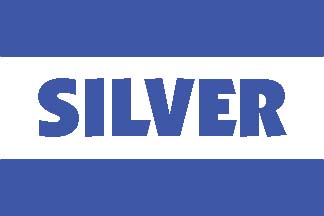 This trio of cargo-liners were the first turbine powered vessels built for Silver Line. Silverlaurel of 9,600 dwt was completed in March 1939, and was followed post-war by the beautiful twin funnelled Silverbriar of 10,160 dwt in February 1948 and her sister Silverplane a few months later. A partnership had been formed in 1908 between the brothers Stanley and John Thompson to act as the managing owners of the new St. Helen’s Steamshipping Co. Ltd. of London. The company owned one tramp, Wearmouth, which was soon renamed Silverbirch.
This trio of cargo-liners were the first turbine powered vessels built for Silver Line. Silverlaurel of 9,600 dwt was completed in March 1939, and was followed post-war by the beautiful twin funnelled Silverbriar of 10,160 dwt in February 1948 and her sister Silverplane a few months later. A partnership had been formed in 1908 between the brothers Stanley and John Thompson to act as the managing owners of the new St. Helen’s Steamshipping Co. Ltd. of London. The company owned one tramp, Wearmouth, which was soon renamed Silverbirch.
The Thompson brothers were members of the famous Sunderland shipbuilding family of Joseph L. Thompson & Sons Ltd., and other members of the family owned tramps in Sunderland. Farringford was purchased from Charlton & Thompson in Sunderland to become Silverash, and the Burrell tramp Fitzpatrick was purchased in 1913 to become Silvercedar. The finances of the company were reorganised for expansion in 1912, and then a management contract was entered into in 1913 with the America-Levant Line, whose directors included Sir Alfred Allen Booth and the Catto family of shipowners. Former British tramps included the Burrell Fitzclarence renamed with ‘River’ names, and were used for Transatlantic services, a contract that was to run until 1930.
Silver Line Ltd.
In 1926, the main project of H. Farquath Kerr of the Kerr Steamship Co. Ltd. of New York was developed into Silver Line Ltd., in which he was the main shareholder. Most of the required capital was obtained from British sources under the Trade Facilities Acts. The early westbound Round the World service with Kerr owned ships was then taken over by Silver Line and Prince Line operating jointly with alternate sailings. The only other American competition was Dollar Line of New York, but British competition came from James Chambers of Liverpool and his Lancashire Shipping Co. Ltd. with ‘Castle’ ships, as well as Bank Line to the Pacific islands. Kerr eventually disposed of his own ships and he died in 1933, selling his shares to Alfred E. Clegg.
Silver Java Pacific Line
In October 1930, Silver Line came to a merger agreement with the Java Pacific Company, established in 1903 and later known as Java-China-Japan Line (JCJL) with cargo-liners with ‘Tji’ as a prefix, and their combined fleets took the name of Silver Java Pacific Line. The General Steamship Company of San Francisco was their American agent, and a fleet of thirteen Silver Line ships and seven Dutch ships then operated on three distinct monthly services in addition to the westbound Silver Prince Round the World service. These services were:-
(1) Pacific Coast of U.S.A. and Canada to the Philippines, Dutch East Indies, Straits ports, and India.
(2) Eastbound Round the World via Panama, South Africa, India, Dutch East Indies and the Philippines.
(3) Pacific Coast of U.S.A. and Canada to the Philippines, Dutch East Indies, Straits ports, Ceylon, Bombay and the Persian Gulf.
Silverlaurel
Silverlaurel was a closed shelterdecker with lower ‘tween decks and had excellent accommodation for a dozen passengers and a crew of 48. The hull form was designed by the builders Joseph L. Thompson & Sons Ltd., North Sands, Sunderland and was tank tested at the National Physical Laboratory at Teddington. She had an overall length of 465 feet, moulded beam of 58.8 feet, depth to shelter deck of 39.3 feet, and a loaded draft of 26 feet. Gross tonnage was 6,142 and she had a conical cruiser stern, a well raked bow, a sternframe of cast steel, and a semi-balanced streamlined rudder. The ‘midships deckhouse had a bow front, and she had two masts and a pair of posts with ten tubular steel derricks of five ton capacity and two derricks of ten tonnes capacity.
Silverlaurel had three decks, and the continuity of the strength of the Lower deck was carried through the machinery spaces by a stringer at the deck level. Welding was used for the seams and butts in the Main Deck and Second Deck as well as for other parts of the ship, with riveting used for the strength parts. Three deep tanks with all welded bulkheads had a total capacity for 2,500 tonnes of liquid cargo, and when empty could be used for water ballast. The fore and peak tanks were likewise designed for either water ballast or liquid cargo e.g. latex. The collision bulkhead extended to the Shelter Deck. Oil fuel and more water ballast were carried in the cellular double bottom and engine room side tanks, which were fitted with heating coils. The five holds had a grain capacity of 550,525 cubic feet, and the lower ‘tween decks and number two upper ‘tween deck were insulated for 40,750 cubic feet of fruit, fish or meat. The refrigerated equipment was supplied by J. & E. Hall Ltd. of Dartford, and cool air was circulated through brine pipes in the granulated cork and wood lined ‘tween deck spaces.
The accommodation was of a very high standard for the passengers in five double berth and two single berth cabins arranged on the port and starboard sides forward on Shelter Deck. The cabins were provided with a good number of wardrobes, a dressing table and washbasin with hot and cold water from easy to use taps. The curved Dining Room was at the extreme forward end of Shelter Deck and had thin partition screens and doors opening to port and starboard to reveal a Lounge and a Smoking Room. The Dining Room had two tables each sitting six passengers at carver chairs, with bright curtains, side serving tables and mirrors. The Lounge had oak backs to the continuous lower seating around the outside of the room, with cream coloured upper parts and porthole windows with curtains. The passenger cabins each had very comfortable beds and light wooden dressing tables with a three piece mirror above, and two portholes covered with brightly coloured curtains. Polished mahogany furniture and korkoid floors were used throughout the passenger cabins and public rooms. The round ceiling lights in the Dining Room, Lounge, Smoking Room and passenger cabins were well designed to give maximum light, and unusually the funnel could also be floodlit at night.
The Master’s dayroom and bedroom and the cabins for the navigating officers were at the forward end of Bridge Deck, and were partitioned off by thick opaque glass screens from the large open promenading deck for use by passengers. The Chief Engineer, Second Engineer and Third Engineer were accommodated on the port side of the Shelter Deck with a combined navigating and engineer officers’ messroom also aft on the port side, and cabins for four more engineers and the apprentices on the starboard side of the Shelter Deck. The native crew were accommodated in the stern of the vessel along with the galley and ship’s hospital. Steam heating systems were ducted to all cabins, with two bathrooms and four toilets provided for the passengers, with one bathroom and one toilet provided for both the navigating officers and engineering officers. The docking bridge aft also had the native crew food locker and the four hundred gallon sanitary tank.
Two lifeboats of 26 feet in length were carried under Welin davits and two lifeboats of 22 feet in length were carried under ordinary gravity davits on Bridge Deck. The Clarke Chapman steam windlass, a dozen steam powered winches, the John Hastie steering gear, steel hatch covers, tarpaulins and canvas covers, fire detection and extinguisher systems, and the electric supply installation were all standard equipment items of that era. The refrigerated provision store rooms could carry 1,500 cubic feet of refrigerated meat and vegetables. The navigating bridge was well equipped with electric direction finders, Hughes compass, echo sounder, and a curved plate wind deflector, which diverted the air stream over the navigating bridge and directed it upwards.
Steam Turbine Machinery
The propelling machinery of Silverlaurel was a good example of a powerful set of marine steam turbines. The single propeller was powered by a set of high pressure, intermediate pressure and low pressure geared turbines supplied by the Wallsend Slipway & Engineering Co. Ltd. taking steam from twin water tube boilers. They produced 4,550 shaft horse power at 110 rpm with steam supplied by the boilers at 400 psi and 750 degrees Fahrenheit, and a service speed of fifteen knots was obtained in all but the stormiest sailing weather. The high pressure turbine was of the impulse type while the ahead portions of the intermediate and low pressure turbines were of the reaction type. The high pressure turbine was double reduction geared to the single screw shaft, and the intermediate and low pressure turbines were single reduction geared to the shaft. The two astern turbines were designed to give 65% of the powerful ahead shaft horse power, and were accommodated in the intermediate and low pressure turbine casings. The high pressure turbine glands were loaded with saturated steam, the high temperature leakage of the glands being by-passed to the low pressure stage. All of the main three turbines were connected by flexible couplings to nickel steel pinions.
The gearing consisted of one main wheel driven by three main pinions, which were actuated respectively by the high pressure, intermediate pressure and low pressure turbines in series. The primary reduction gear was arranged between the high pressure turbine and its main pinion. At normal power, the speed of the high pressure turbine was 5,000 rpm, and 2,200 rpm for the intermediate pressure and low pressure turbines. The gearing was of the double helical type with the main gearwheel consisting of a cast iron centre with forged steel rims, all securely fastened to the gear wheel shaft. All of the bearings for both the turbines and the gearing were supplied with forced lubrication, as was the main Michell type thrust block. A Siemens torsion meter measured the shaft horse power, and the main condenser was manufactured by Weir of Glasgow and was suspended from the low pressure turbine casing. The solid bronze propeller was manufactured by J. Stone Ltd. and had four blades. These high efficiency ‘Novoston’ special alloy propellers were supplied to all types of merchant and naval vessels.
Loss Of The Silverlaurel
Silverlaurel was first used on the Kerr-Silver Line service from the Eastern Seaboard and U.S. Gulf ports to the Mediterranean, Alexandria, Suez Canal, Red Sea and Persian Gulf, before she took her place in June 1939 on the Round the World service along with her seventeen other Silver Line fleetmates. She then came under Ministry of War Transport requisition, and was damaged by German bombs while unloading at Hull in June 1941, and by the latter part of the war was mostly sailing to West Africa. Eleven of this big Silver Line fleet were lost as a result of enemy action, with Silverlaurel the last to be sunk on 18th December 1944. She had sailed from Duala on the Cameroon river fully loaded with 2,950 tonnes of cocoa beans, 2,425 tonnes of palm oil, 758 tonnes of timber, 303 tonnes of logs, 317 tonnes of rutile sand, 66 tonnes of coffee, thirty tonnes of ramie, and two hundred tonnes of rubber. She was sighted by a U486 in the English Channel to the south of Falmouth on her voyage to Hull and torpedoed and sunk, but fortunately all of her crew and her ten gunners and nine passengers were saved.
Silverbriar and Silverplane
Twin funnelled passenger liners and combination passenger and cargo-liners were commonplace, the rarity however was the twin funnelled cargo-liner. Early examples were Howick Hall of 8,079 dwt built in 1910 by William Hamilton & Co. Ltd. of Port Glasgow for Charles Dunn & Co. Ltd. of Liverpool. She ran on a service from New York to South American ports for five years until purchased by an American steel company for their Isthmian Line. The Deutsch-Australisch D.G. (DADG) fleet of Germany built a number of twin funnelled cargo-liners just before and after 1900. The last to this design was launched as Mulhausen in 1915 by A.G. Neptun yard at Rostock. She was completed as the Lennep of 8,000 dwt towards the end of the war, and surrendered to Britain as war reparations before her sale to Bergen Line as Brant County in 1921.
The twin funnelled vogue in the early 1960s was two thin engine exhausts placed side by side e.g. the four cargo-liners of Manchester Liners, the ‘Cap San Marco’ class of Hamburg-Sud, and the ‘C3-S-37’ and ‘C4-S-66’ types of Lykes Brothers, and the 1967 pair of ‘Skandia’ cargo-liners for Transatlantic Rederi of Sweden in Talarah and Woollahra of 16,740 dwt. The twin funnelled Silverbriar and Silverplane later became much more well known under their Cunard Line funnel colours and names of Andria and Alsatia. Silverbriar was launched at the North Sands yard of Joseph L. Thompson & Sons Ltd. on 21st May 1947, and Silverplane followed her sister down the ways six months later.

Silverbriar and Silverplane were completed for the Round the World service of Silver Line in 1948. They had five holds and six hatches, with lower and upper ‘tween decks in numbers one, two and four holds, and upper ‘tween decks in numbers three and five holds. There were four deep tanks in number three hold for the carriage of fuel oil, palm oil, latex or water ballast. Cargo gear consisted of fourteen five tonne, four ten tonne, and a single fifty tonne heavy lift derrick on the foremast for use on number two hold. The forward funnel was a dummy and encased the bridge structure with chartroom, wheelhouse and Captain’s House, and was fitted with a ‘monkey island’ on the inside of the top. Accommodation for twelve passengers was of a high standard in eight single berth and two double berth staterooms, each with a private bathroom, on Bridge Deck.
The superstructure was two decks high, with the Bridge Deck above the Upper Deck. The passenger Smoking Room and adjoining Lounge and Writing Room were forward on Bridge Deck. The Smoking Room had oak timbered walls and an oak beamed ceiling to create the atmosphere of an old English inn. The red brick fireplace was flanked by bold side pillars and was surmounted by a large oak beam. A model of a fully rigged ship was placed above this, and an open red brick hearth had an ornamental grate. The period furniture included Windsor armchairs, high backed settles, and oak tables. The adjoining Lounge and Writing Room had murals of matza birch panelling on fawn coloured walls with walnut furniture, armchairs, and moquette covered sofas, walnut writing tables and a recessed bookcase.
The Dining Room for passengers at the aft end of Bridge Deck had seating for eighteen persons, and was panelled in walnut with sycamore reliefs and soft furnishings in pleasing shades of blue. A large mural adorned the forward wall, and the aft wall had folding doors to give direct access to a pleasant sheltered verandah. These doors were of opepe wood, with the doors at the forward end being double swing glass panelled doors, and together with a general pleasing colour scheme and good quality lined and weighted curtains provided a cosy and relaxing atmosphere.
Silverbriar completed her trials on 11th February 1948 off the North East Coast, having achieved a good average speed of 16.7 knots from a set of three Parsons double reduction geared turbines connected to a single screw shaft. She sailed on a positioning voyage to New York, and then to inaugurate the merged post-war U.S.A. to Persian Gulf and U.S.A. to India routes. Silverplane was launched in November, 1947 and followed her sister to New York later in 1948, and could be distinguished as she had a narrower blue top to her funnel with the blue band on the white part correspondingly lower. Internally she also slightly differed in that the aft wall of the passenger Dining Room had sliding and folding screens so that the whole of the room could be opened to the verandah.

Change Of Trading
Silverbriar and Silverplane were the first victims of a complete change in trading for Silver Line. In 1947, the Thompson brothers ownership and management moved to the Barraclough family, with Henry as Chairman and William and David as directors. Under the new leadership the direction of the company’s thrust was changed from a liner company to tramping and time charter trading in worldwide bulk commodities. The four later sisters of Silverbriar and Silverplane were sold after launching to other British owners, and were each completed with a single funnel as Teiresias, Ulysses and Teucer for Blue Funnel Line, and Eastern Glory for the Indo-China Steam Navigation Co. Ltd. of Jardine, Matheson & Co. Ltd. of Hong Kong. A ‘Victory’ type turbine powered cargo-liner, Colorado Victory renamed Silvermaple after a three month refit at the North Sands yard of Joseph L. Thompson & Sons Ltd., was also sold off in 1952 after five years service to Silver Line.
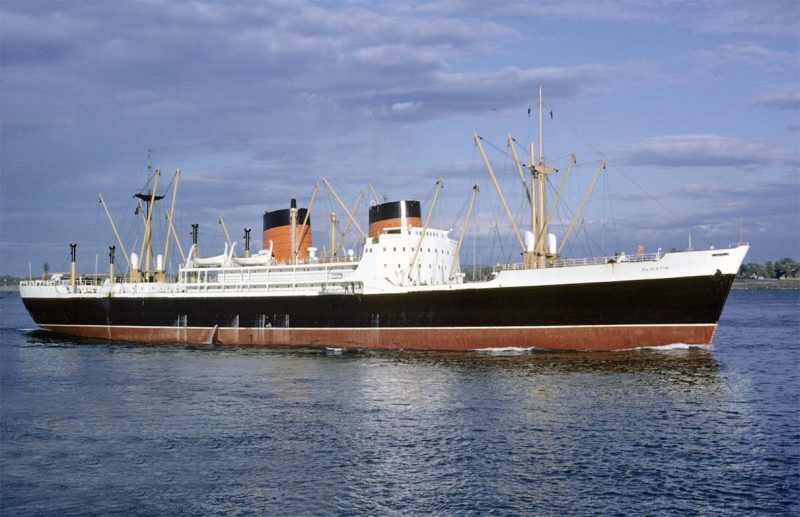
After less than four years trading, Silverbriar and Silverplane were sold in March 1952 for £1.25 million to Cunard Line for Transatlantic trading although the passenger accommodation was never used again. They were renamed Andria and Alsatia respectively and the famous red and black funnels of Cunard improved the appearance of the pair. Andria sailed from London on 17th April 1952 bound for New York via Le Havre, and together with sister Alsatia they were employed on the London and New York and Canada routes for the next eleven years. The pair were then sold to a subsidiary of the C.Y. Tung Group, China Union Lines and renamed Union Faith and Union Freedom. Union Faith met a fiery end on 17th April 1969 when she was in collision with a tug and three oil barges off New Orleans, resulting in an enormous oil spill and fire and considerable loss of life. Union Faith was later broken up where she lay as a blackened fire wrought wreck. Union Freedom sailed on until February 1977 when she arrived for breaking up at Kaohsiung.
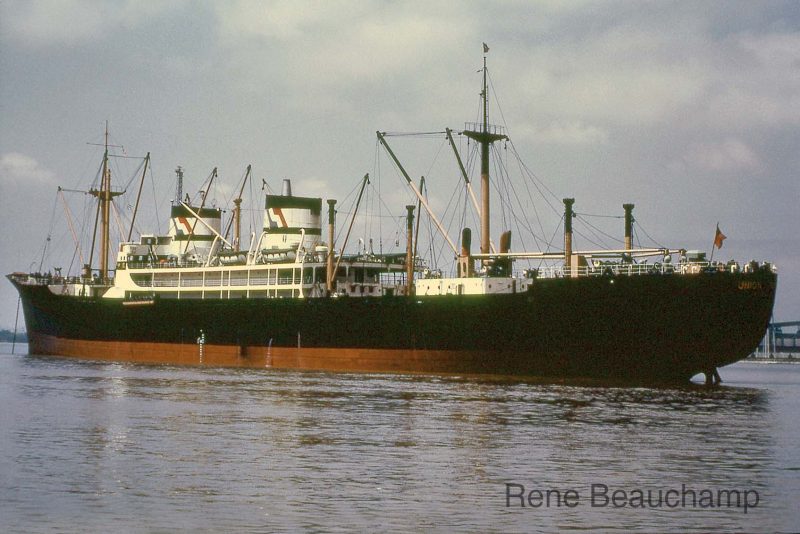
Postscript
In 1972, twenty years after Silver Line sold off its fleet of three turbine powered cargo-liners, it was operating a fleet of nine diesel powered bulk carriers of up to 142,000 dwt in the Seabridge consortium. These were Avon Bridge, Eden Bridge, Erskine Bridge, Gallic Bridge, Silver Bridge, Severn Bridge, Seto Bridge, Spey Bridge, and Stirling Bridge. However, steam turbine powered Red Duster registered ore/oil bulkers were being traded by the P. & O. Bulk Shipping Division at this time in Irfon, Jedforest, Kildare and Lauderdale, proving that the steam turbine still held a place in marine propulsion. Their double reduction geared steam turbines of 32,000 shaft horse power gave service speeds of these leviathans of the seas of sixteen knots. The last of this quartet was still under P. & O. management in the early 1990s, almost one hundred years after the steam turbine had been shown to be a viable marine propulsion power source by Sir Charles Parsons with his fast yacht Turbinia.

Turbinia was the first steam turbine driven vessel in the world when completed at the sheet metal works of Brown and Hood at Wallsend on Tyne, and was launched into the Tyne on 2nd August 1894. She achieved 34.5 knots on speed trials in the North Sea and staged a spectacular display of her speed in front of the fleet assembled for the Queen Victoria’s Diamond Jubilee Fleet Review at Spithead in 1897. She remained the fastest vessel in the world for many years, and her success led to the formation of the Parsons Marine Steam Turbine Company (Turbinia Works) at Wallsend in early 1898. The Turbinia can be seen today in all of her glory at the Newcastle Discovery Museum.

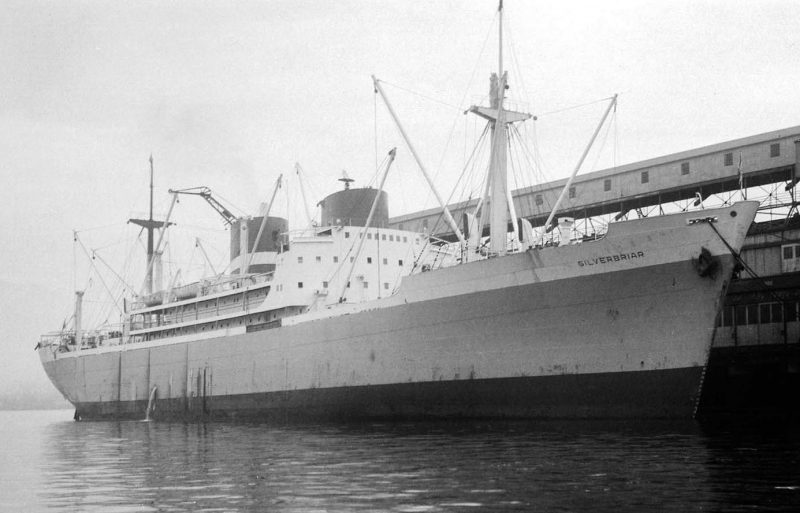
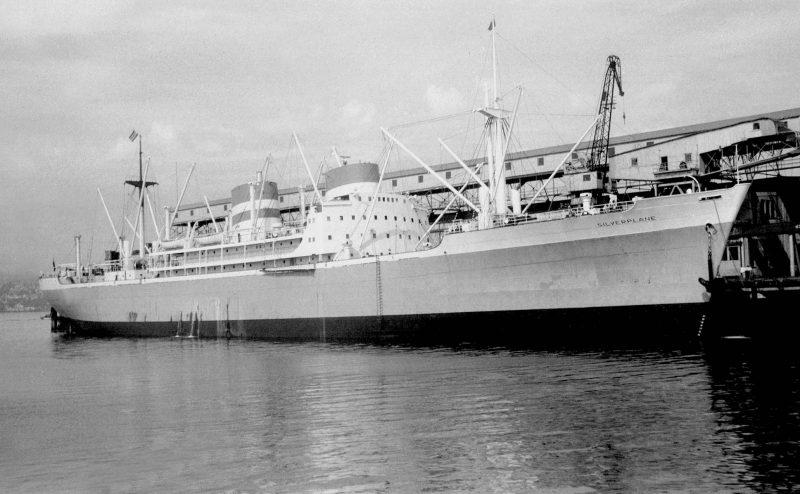

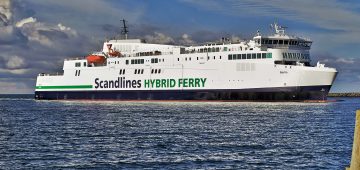



Comments
Sorry, comments are closed for this item